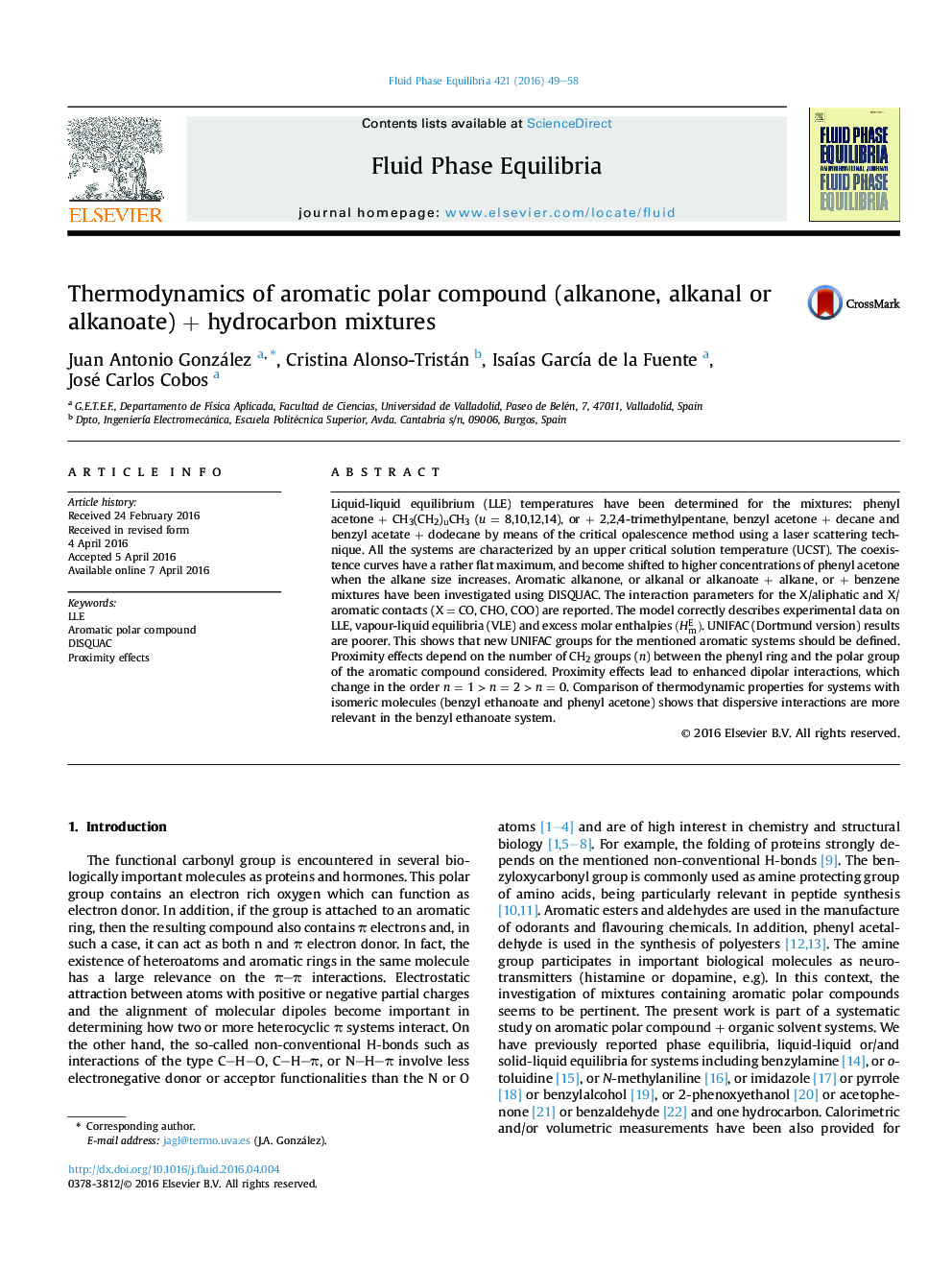| کد مقاله | کد نشریه | سال انتشار | مقاله انگلیسی | نسخه تمام متن |
|---|---|---|---|---|
| 200695 | 460509 | 2016 | 10 صفحه PDF | دانلود رایگان |

• LLE data are reported for aromatic polar compound + alkane (polar group, X = CO, CHO, COO).
• Mixtures are investigated using DISQUAC. New UNIFAC groups are needed for these aromatics.
• LLE, VLE and HmE data are well described by DISQUAC.
• Proximity effects depend on the relative position of X respect to the phenyl ring.
Liquid-liquid equilibrium (LLE) temperatures have been determined for the mixtures: phenyl acetone + CH3(CH2)uCH3 (u = 8,10,12,14), or + 2,2,4-trimethylpentane, benzyl acetone + decane and benzyl acetate + dodecane by means of the critical opalescence method using a laser scattering technique. All the systems are characterized by an upper critical solution temperature (UCST). The coexistence curves have a rather flat maximum, and become shifted to higher concentrations of phenyl acetone when the alkane size increases. Aromatic alkanone, or alkanal or alkanoate + alkane, or + benzene mixtures have been investigated using DISQUAC. The interaction parameters for the X/aliphatic and X/aromatic contacts (X = CO, CHO, COO) are reported. The model correctly describes experimental data on LLE, vapour-liquid equilibria (VLE) and excess molar enthalpies (HmE). UNIFAC (Dortmund version) results are poorer. This shows that new UNIFAC groups for the mentioned aromatic systems should be defined. Proximity effects depend on the number of CH2 groups (n) between the phenyl ring and the polar group of the aromatic compound considered. Proximity effects lead to enhanced dipolar interactions, which change in the order n = 1 > n = 2 > n = 0. Comparison of thermodynamic properties for systems with isomeric molecules (benzyl ethanoate and phenyl acetone) shows that dispersive interactions are more relevant in the benzyl ethanoate system.
Figure optionsDownload as PowerPoint slide
Journal: Fluid Phase Equilibria - Volume 421, 15 August 2016, Pages 49–58